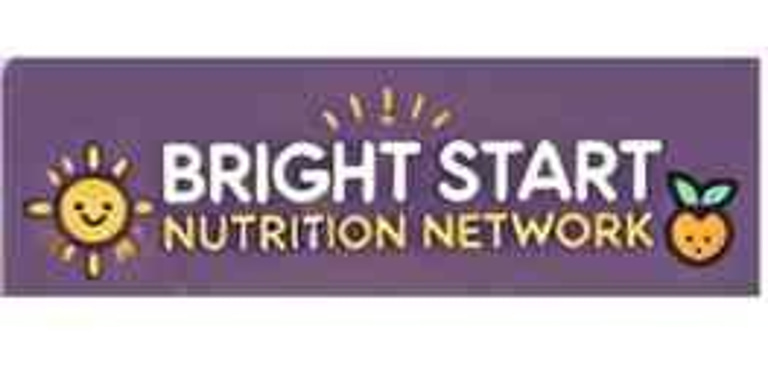Living in A Food Desert? Here are some strategies to eat better
Here are some ways you can feed yourself and your family more nutritious meals even if you are living in a metropolitan area that is considered to be a food desert.
2/4/20253 min read


Food deserts in Los Angeles County are areas where residents have limited access to affordable and nutritious food. These regions often lack supermarkets, grocery stores, and farmers' markets, leaving fast-food outlets and convenience stores as the primary food sources. Food deserts are prevalent in low-income neighborhoods, disproportionately affecting minority communities, particularly African American and Latino populations.
Impact on the Health of Minority Children and Their Families
Poor Nutrition and Health Outcomes
Limited access to fresh fruits, vegetables, whole grains, and lean proteins leads to diets high in processed foods, sugar, and unhealthy fats. This increases the risk of:Obesity: A major concern among minority children, leading to lifelong health issues.
Type 2 Diabetes: Rising rates in children, particularly among Latino and African American populations.
Heart Disease and Hypertension: Poor dietary habits contribute to early signs of cardiovascular issues.
Cognitive and Academic Performance
Malnutrition affects brain development, concentration, and memory, which can hinder academic performance and future opportunities for children.Mental Health Issues
Food insecurity is linked to stress, anxiety, and depression in both children and parents, creating a cycle of emotional and physical health challenges.Intergenerational Impact
Poor eating habits are often passed down through generations, making it harder to break the cycle of food-related health disparities.
What Can Be Done to Address Food Deserts?
Policy and Advocacy Efforts
Incentivize Grocery Stores: Offer tax breaks or grants to encourage supermarkets to open in underserved areas.
Support Food Assistance Programs: Expand programs like WIC, SNAP, and school meal programs to improve food access.
Community-Based Solutions
Urban Agriculture: Support community gardens and urban farms, which provide fresh produce and foster community engagement.
Mobile Markets: Bring fresh food directly to neighborhoods via mobile grocery stores or farmers' markets.
Nutrition Education
School Programs: Implement nutrition education in schools to teach children healthy eating habits.
Community Workshops: Offer cooking classes, budget-friendly meal planning, and nutrition workshops for families.
Partnerships with Local Organizations
Collaborate with nonprofits, faith-based organizations, and healthcare providers to distribute healthy foods and educational materials.
Innovative Approaches
Food Hubs: Establish centralized locations where local farmers and producers can distribute fresh food efficiently.
Technology Solutions: Use apps and online platforms to connect families with local food resources, meal planning tips, and delivery options.
Addressing food deserts in Los Angeles County requires a multi-faceted approach that combines policy changes, community engagement, and education. By focusing on both immediate food access and long-term behavior change, we can help minority children and their families achieve better health outcomes and break the cycle of food insecurity.
What Can Parents Do to Feed Their Families Better?
Feeding a family nutritious meals can be challenging, especially with busy schedules, tight budgets, and limited access to healthy foods. However, with some planning and smart strategies, parents can improve their family's nutrition and foster healthy eating habits.
🍎 1. Focus on Whole, Unprocessed Foods
Prioritize Fruits and Vegetables: Aim to fill half the plate with colorful fruits and vegetables, fresh, frozen, or canned (in water or natural juice).
Choose Whole Grains: Replace white bread, pasta, and rice with whole-grain versions for more fiber and nutrients.
Lean Proteins: Incorporate beans, lentils, eggs, chicken, fish, and lean meats. Plant-based proteins are budget-friendly and nutritious.
🛒 2. Plan Meals and Shop Smart
Create a Weekly Meal Plan: Planning helps avoid last-minute fast food choices and reduces food waste.
Make a Grocery List: Stick to the list to prevent impulse buys and save money.
Buy in Bulk: Purchase staples like rice, oats, beans, and frozen vegetables in bulk for cost savings
🥗 3. Cook at Home More Often
Simple Recipes: Focus on easy, quick meals with minimal ingredients, like stir-fries, one-pot soups, or sheet pan dinners.
Batch Cooking: Prepare large portions and freeze leftovers for busy days.
Involve the Family: Get kids involved in cooking. They’re more likely to try new foods when they help prepare them.
🥤 4. Make Healthy Drinks the Norm
Water First: Encourage water as the main drink. Add slices of fruit or cucumber for flavor.
Limit Sugary Drinks: Reduce soda, juice, and energy drinks, which are high in sugar and empty calories.
🍽️ 5. Create a Positive Eating Environment
Family Meals: Eating together promotes healthier food choices and strengthens family bonds.
Avoid Food as a Reward: This can create unhealthy emotional connections to food.
Model Healthy Eating: Kids learn by watching—parents’ food choices influence their habits.
💡 6. Budget-Friendly Healthy Eating Tips
Frozen Over Fresh: Frozen fruits and veggies are just as nutritious and often cheaper than fresh.
Seasonal Shopping: Buy produce that’s in season—it’s more affordable and tastes better.
Reduce Food Waste: Use leftovers creatively in soups, stir-fries, or wraps
📚 7. Educate and Empower Kids
Teach Nutrition Basics: Help kids understand the importance of healthy foods.
Let Kids Choose: Give them healthy options to pick from so they feel in control
.
🚀 Quick Healthy Snack Ideas
Apple slices with peanut butter
Yogurt with fresh berries
Carrot sticks with hummus
Hard-boiled eggs
Homemade popcorn
✅ Final Thoughts
Parents don’t need to be perfect—small, consistent changes can make a big difference over time. The goal is to create a balanced, healthy food environment where nutritious choices are easy, enjoyable, and sustainable for the whole family.
